How asteroid samples could save Earth and unlock mystery of space
Australian researchers are studying samples taken from a 4.5 billion-year-old asteroid to figure out how we can prevent a future collision while unlocking the mind-boggling secrets of our universe
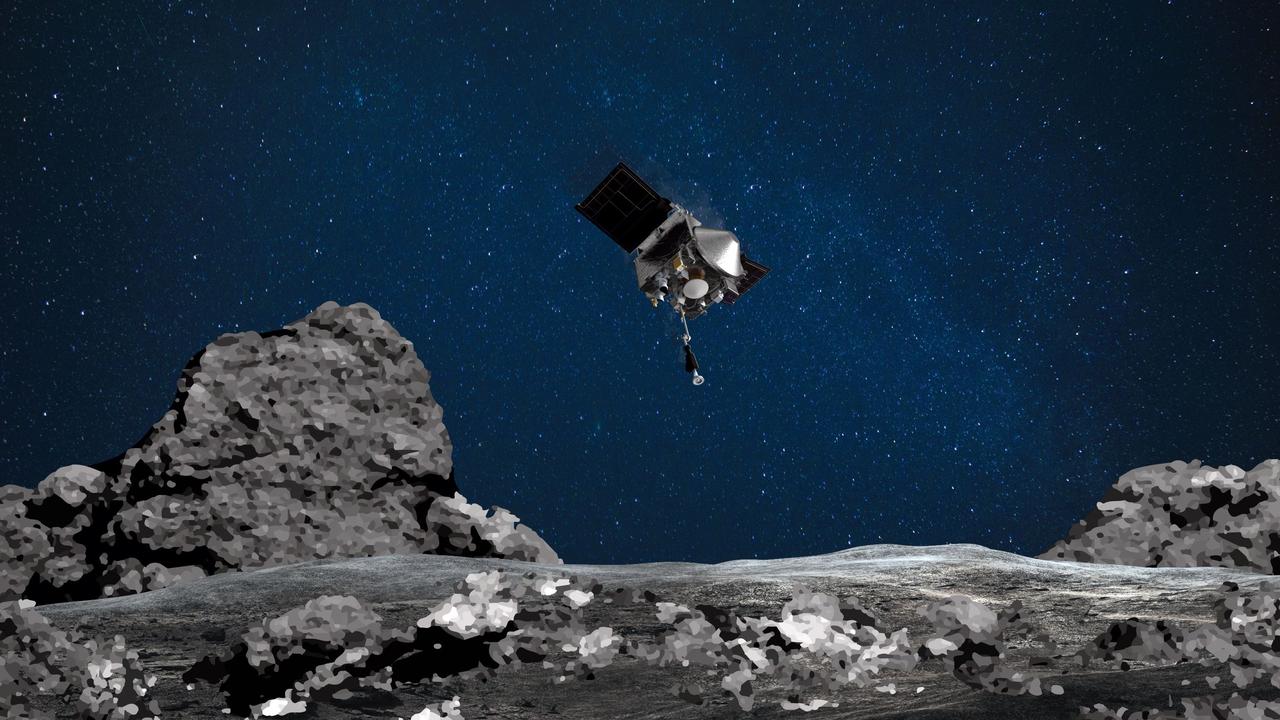
READING LEVEL: ORANGE
After a seven-year NASA journey to scoop up samples from asteroid Bennu*, Australian researchers have received the surface material that will help them understand what the giant asteroid is made of in case they ever need to deflect it from a collision with Earth.
The scientists said the samples could also help them unlock the secrets of the earliest phase of the universe.
The 500m-wide Bennu is categorised as a potentially hazardous Near-Earth Object (NEO) and NASA said it had an elevated risk* of impact with Earth in the year 2182, with a probability* of 1 in 2700 (or about 0.037 per cent).
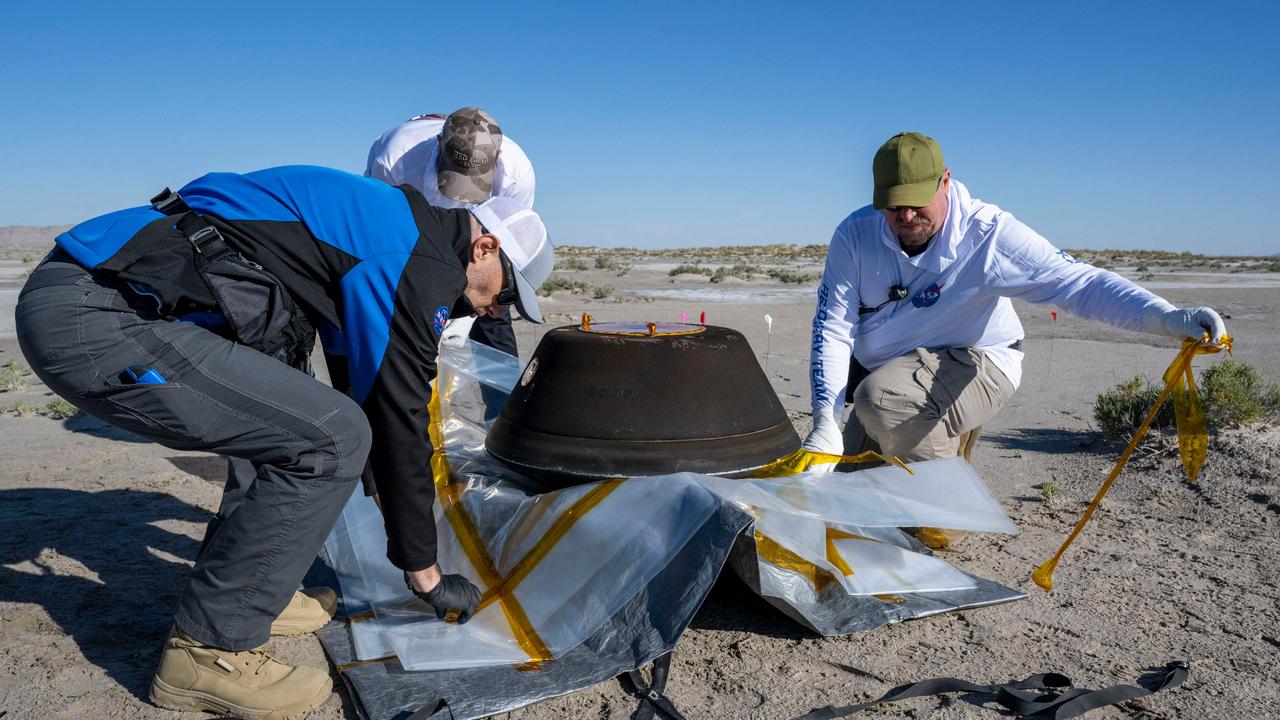
In 2135, Bennu is forecast to make a “close” approach to Earth (more than 200,000km away).
While not posing a danger at that time, the asteroid will hurtle between us and the moon at a speed of 101,000km/hr with an “extremely small chance” of passing through a 5km gravitational keyhole* that NASA said “would set it on just the right path to impact Earth, late in the 22nd century.”

Surface material from Bennu was vacuumed up in 2020 by NASA’s OSIRIS-REx unmanned spacecraft which sent its cosmic cargo back to Earth, landing in the Utah desert in September 2023.
Two small samples were later flown to Australia under scientifically-sterile conditions, to prevent any Earth atmospheric or biospheric* interference, where Curtin University’s Space Science and Technology Centre was tasked with identifying if the samples were part of the original 4.5-billion-year-old asteroid or had been tainted by Earth matter.
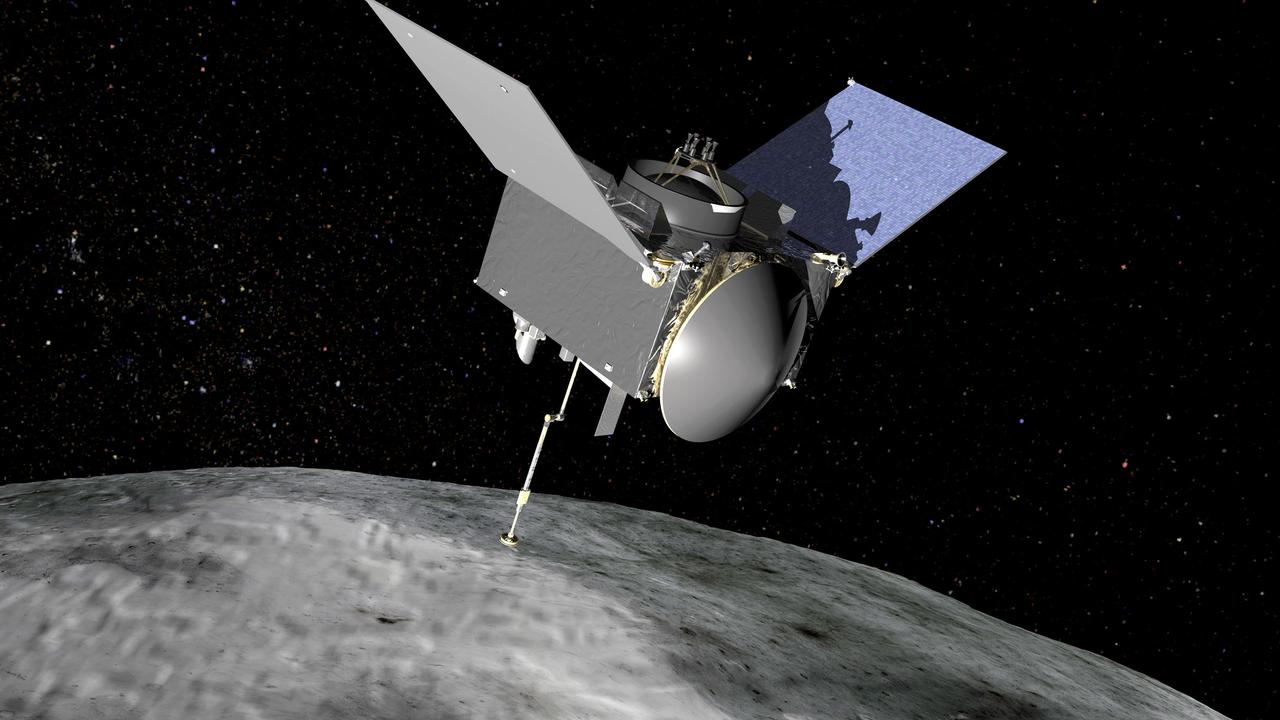
Analysis so far shows Bennu is among the most chemically primitive materials known and has a similar composition to the visible surface of the sun, Curtin’s Associate Professor Nick Timms said.
The analysis suggests Bennu had undergone different processes to planets in its evolution. The team from Curtin identified minerals such as hydrated* phyllosilicates* (which forms in the presence of water) and carbon-rich material.
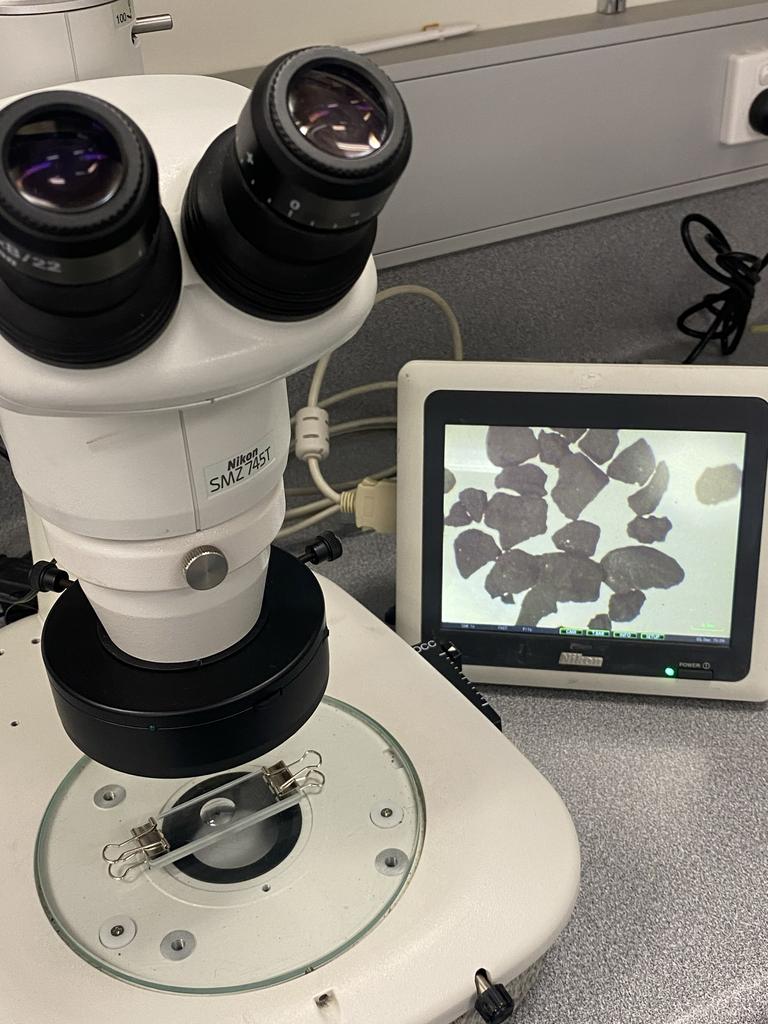
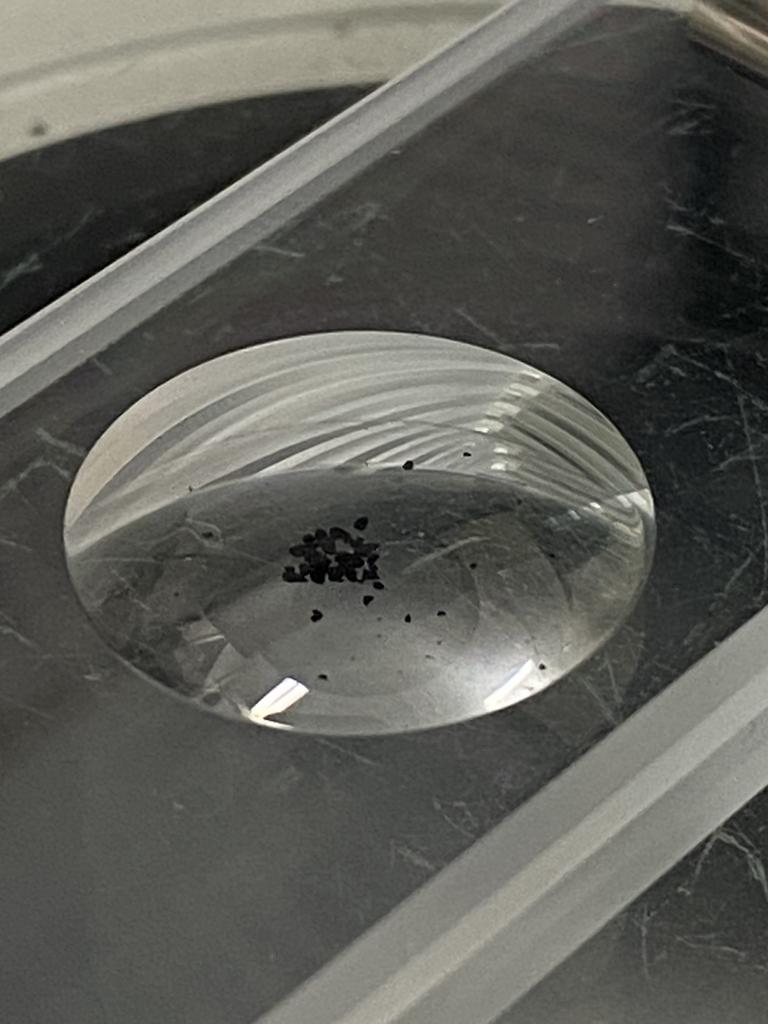
“This means asteroids such as this may have played a key role in delivering water and the building blocks of life to Earth,” Assoc Prof Timms said.
“There are also very practical implications* to understanding the composition of asteroids, from identifying potential mining opportunities to knowing how to best protect ourselves should an asteroid be on a collision course with Earth.”
The Curtin team received about 12 milligrams of “fine” and “intermediate” particles from Bennu, he said.
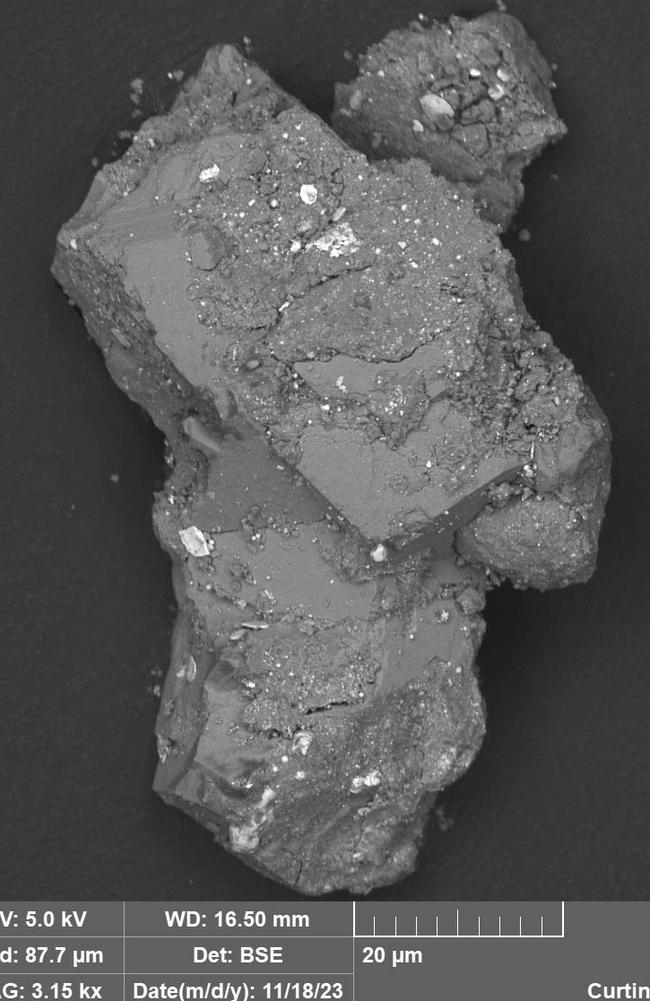
“These particles are typically less than 0.1mm across, with a few pieces approximately 0.5mm across,” Assoc Prof Timms said.
He said while some of the material was as old as the asteroid, other grains appeared to be “from the earliest material that condensed from the solar nebular right at the beginning of our solar system.”
The team had also analysed other grains that came from other star systems older than our own, he said.
“The sample returned from asteroid Bennu is the latest of three asteroid sample return missions ever completed,” he said.
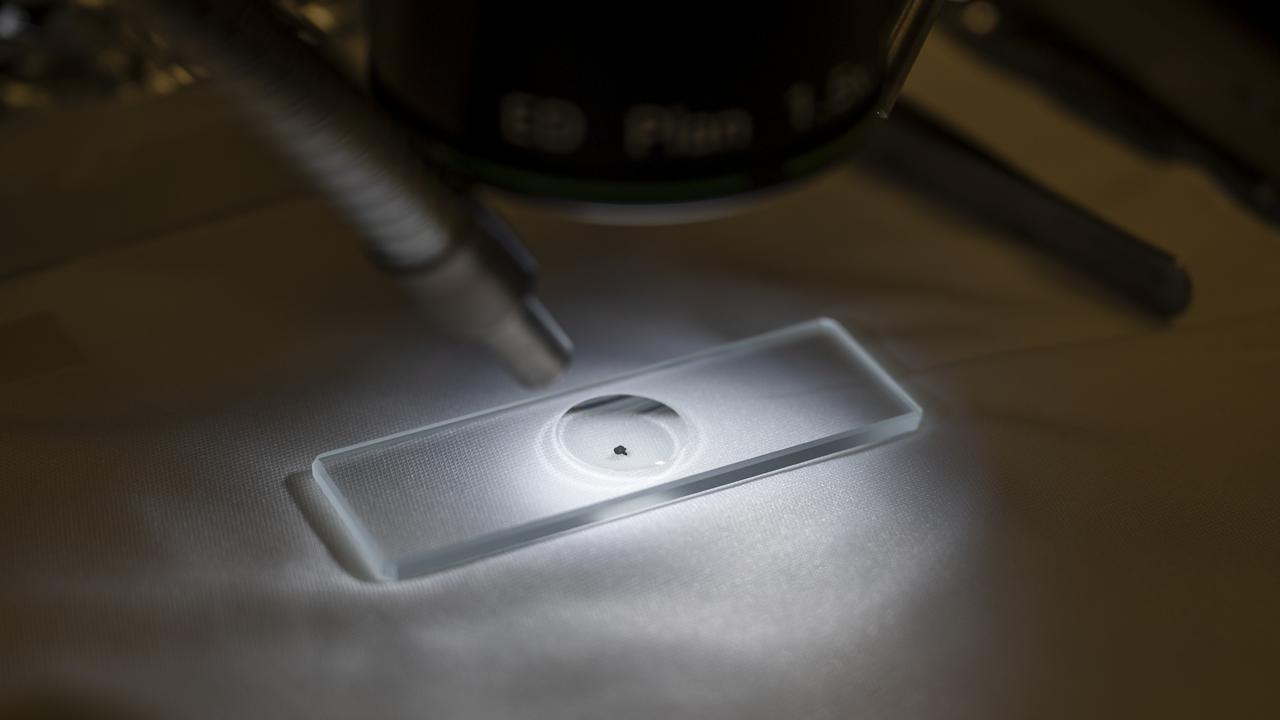
“The Japanese Space Agency (JAXA) Hayabusa and Hayabusa II missions brought back samples from asteroids Itokawa and Ryuguin 2010 and 2020, respectively.
“These samples, along with dust from the tail of a comet collected by NASA’s Stardust mission, are all providing valuable insights into our early solar system.”
Scientists believe a “planet killer” asteroid would need to be at least 10km wide. Bennu, at 500m-wide, would cause damage of a “regional” scale, impacting with the equivalent of about 1.4 billion tonnes of explosive to create a crater 20 times its size. The impact would create a dust storm in the atmosphere that could disrupt agriculture for two years.
On average, Earth is struck by an asteroid of 1km-width every 500,000 years.
POLL
GLOSSARY
- asteroid Bennu: a space rock with the highest known probability of hitting Earth in the next 200 years
- elevated risk: higher risk
- probability: likelihood or chance
- gravitational keyhole: a tiny area in space where a planet’s gravity could change the orbit of a passing asteroid causing it to collide with the planet on the next orbital pass
- biospheric: relating to the part of Earth where life exists, the biosphere
- hydrated: a reaction that adds water to the crystal structure of a mineral, creating a new mineral
- phyllosilicates: sheet silicate minerals, including clay, talc, serpentine, chlorite and micas
- practical implications: potential values of the study that have real or practical outcomes
EXTRA READING
First tourist ‘sets foot’ in space
Two astronauts stranded in space
Scientists find underground cave on moon
QUICK QUIZ
1. What is the probability Bennu will impact Earth in 2182?
2. How old is the asteroid?
3. How close will Bennu come to Earth in 2135?
4. At what speed will it travel between Earth and the moon during this time?
5. On average, how often is Earth struck by a 1km asteroid?
LISTEN TO THIS STORY
CLASSROOM ACTIVITIES
1. Asteroid deflecting contraption
Think about and sketch a design for a machine or contraption that could deflect an asteroid away from Earth if it happens to get close in the next century.
Your design should be detailed, outlining the components that will be strong enough to deflect an asteroid.
Give your contraption a name and outline what materials it might be made out of.
Time: allow 30 minutes to complete this activity
Curriculum Links: English, Science, Design and Technologies, Personal and Social, Critical and Creative Thinking
2. Extension
How old will you be in the year 2135 when the asteroid could come close?
What things might have changed by then compared to now?
Time: allow 10 minutes to complete this activity
Curriculum Links: English, Science, Mathematics, Personal and Social, Critical and Creative Thinking
VCOP ACTIVITY
Summarise and uplevel with connectives and sentence openers
Please read through the article about the asteroid Bennu and NASA’s mission. After reading, your job is to summarise essential information using connectives and sentence openers to make your sentences more interesting and varied. First, you will need to identify the key points from the article. Next, rephrase to summarise the points using a variety of connectives and sentence openers.
Remember:
- Connectives (to join ideas together, e.g., however, because, therefore, although)
- Sentence Openers (to start your sentences in different ways, e.g., According to scientists, After the mission, Interestingly, Despite the risks)
Challenge: Use at least three different connectives and three different sentence openers in your summary.

